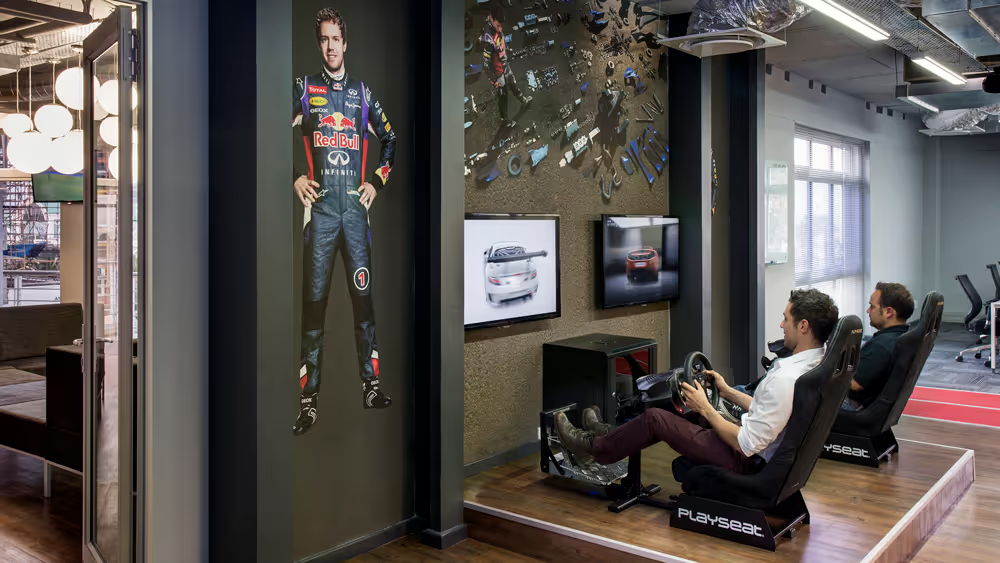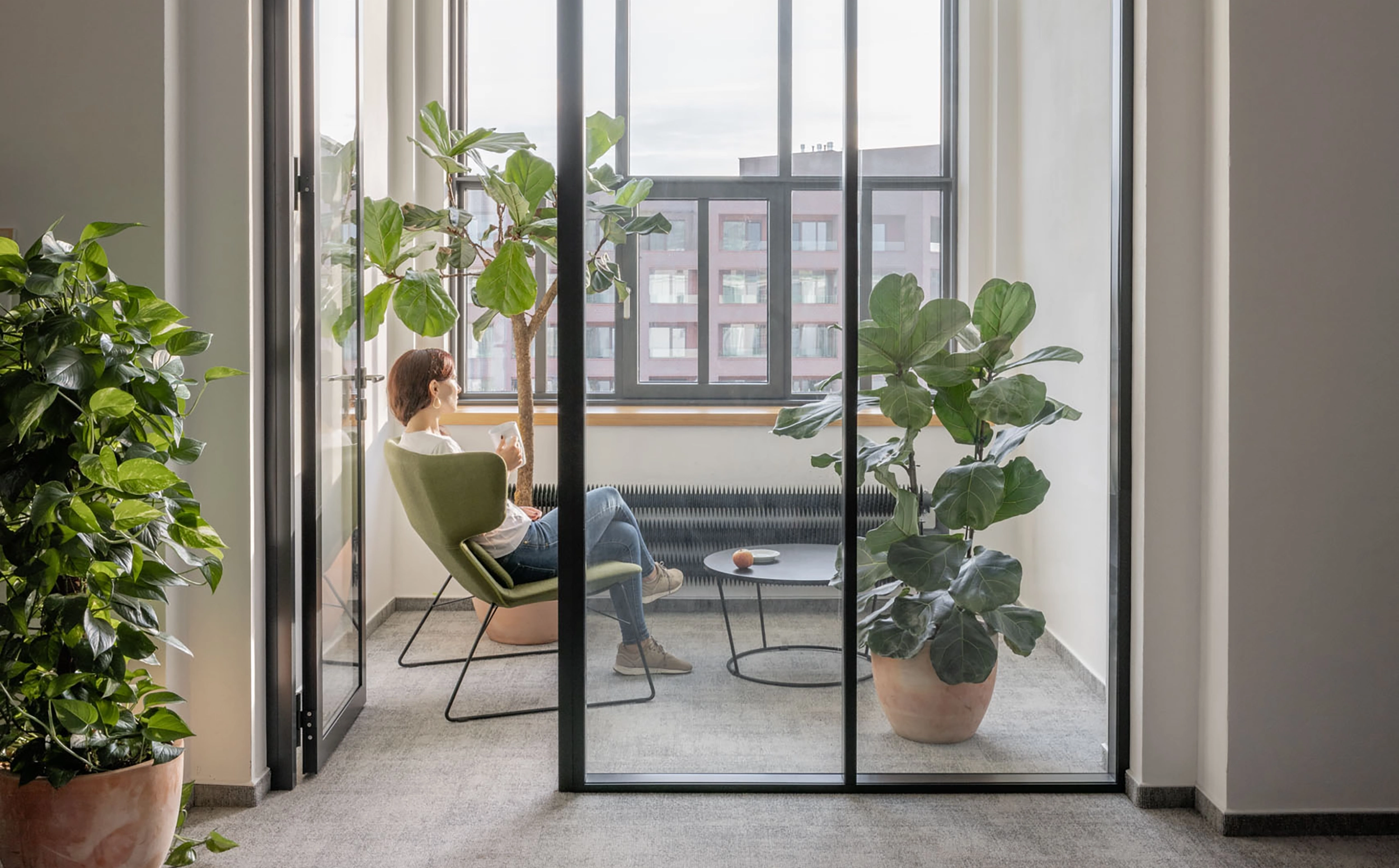Employee wellbeing helps staff to be more productive, creative, innovative, supports longevity and staff retention. When organisations embrace the opportunity to improve employees’ wellbeing, they create more engaging places to work and greater returns for the company as a whole.
As South African corporates begin to wake-up and smell the workplace benefits, it’s evident they realise that office wellbeing is fast gaining attention, and for good reasons. *According to recent research conducted in the states, companies with thriving wellbeing have 41 percent lower health related costs compared with those who are struggling at midpoint. They also have a 35 percent lower turnover rate.
From games rooms to hydroponic gardens, the list to promote organisational wellbeing is endless. Here are four inspirational examples of local companies that have created unique workplace environments, with a touch of their own brand personality, to promote wellbeing:
- Volkswagen Sandton paints the town green: As companies become environmentally conscious – sustainable development has emerged as a growing trend to create high-performance, energy-efficient structures that improve employee comfort and well-being while minimising environmental Now is the time to “Greenovate”. Why, because people spend more than 90% of their time inside the artificial environments of buildings and they are starting to expect a lot more from their employers.Volkswagen’s Sandton offices were built with innovative ‘eco’ features integrated into the building. Most of the materials used are recyclable with motion sensor lighting throughout. All the furniture was made by a local company called AngelShack which boosts zero harmful formaldehyde emissions, commonly used in the manufacturing of furniture. Energy efficient air-conditioning was installed and the building is also fitted with highly efficient thick tinted glass for natural insulation and maximum natural light. One of the key features in the building is the indoor hydroponic garden for staff and visitors to enjoy.
- Let there be light – Grant Thornton provides beautiful extensive open plan areas filled with natural sunlight: Adding natural light into a building was once considered a “soft” benefit for employees but it is now seen to dramatically improve employee wellbeing. For example, schools with more natural light, has shown to improve test scores and reduce absenteeism. The massive 10,800m2 three storey building positioned at Wanderers Office Park is the admired address to more than 470 Grant Thornton employees. Here, the group provides modern, open plan spaces and breakaway areas. The enormous open-plan space beams with natural sunlight and allows for Activity Based Workspace where staff are assigned an open plan desk with access to quiet rooms and collaboration areas. To further promote wellbeing, an art gallery and a ‘CEO room’ concept was introduced. An art area exhibits more than 100 pieces by artists including; Deborah Bell, Derrick Nxumalo, Helen Sebidi, Judith Mason and William Kentridge. The CEO room, provides space where executives can work on strategic, financial and leadership issues which are free from distractions. The building also features a prayer room for religious staff.
- It’s all fun and games for Red Bull: Just gazing upon the great outdoors can also boost the morale of staff. Recent trends in green architecture is incorporating nature into buildings and prioritizing views of nature, which leads to better concentration and feelings of calmness, wellbeing, and better problem-solving. Red Bull gives their employees wings by providing a 1,600m2 space right at the harbours edge in the Waterfront, Cape Town. Designed around their people and their brand, the offices feature amazing views, as well as walls which showcase the brand’s sport adventures, a games room for staff and private war rooms to strategise in. High-end and funky, the space clearly represents their standing as a global brand with a fun industrial look with no ceilings and all the services exposed, while being acoustically sound proofed. The floor space is populated over two floors in a way that encourages staff to move between the floors while not creating any hierarchical structures. The modern, high-energy design shows off their brand while creating a fun space for employees to enjoy and perform at their best.
- PPC uses cement to create an office masterpiece: In the group’s state of the art 6,000m2 Green Star Rated building, you will find no doors, allowing for transparency between management and their departments. The brand creatively used their corporate colours throughout the building but more importantly stamped their unique mark by creating beautiful cement tunnels off the central core and in the canteen area. PPC provides an environment that is transparent and allows people to move freely and work how and where they want. The building is glass fronted to allow for natural light while being energy efficient. All the furniture is VOC free and has an antibacterial coating to protect staff from germs. The result is a high tech, 4 star green rated building that highlights who PPC are and their mission statement throughout while allowing their staff to work in a healthy, open plan and modern building.
5 wellbeing tips to consider:
- A great workspace should be designed to stimulate both mind and body throughout the day.
- Branding, colour and messages throughout the office help deliver a message to staff about wellbeing.
- While we realise wellbeing is important, addressing it in the workplace isn’t easy. Wellbeing means different things to different people and in different places. What is right for one isn’t necessarily right for another.
- Furniture is becoming more flexible and adjustable. A trend in South Africa right now is height adjustable desks.
- Providing natural light and views of the outdoors to employees is a fundamental design principle to consider for wellbeing.
The most obvious differentiator of a workplace designed for wellbeing is by providing a number of spaces to support the different kinds of work performed during the course of the day, a combination of open and private areas. This gives employees the ‘choice’ and empowers them to find the space and tools they need to work, which increases social interaction and connectedness with others.
Wellbeing at work benefits organisations by helping employees to feel happy, proficient and fulfilled in their roles. Evidence shows that people who achieve good standards of wellbeing at work are likely to be more creative, more loyal, more productive, and provide better customer satisfaction than those with poor levels. Ultimately, workplace surroundings can either help or hinder employee wellbeing.






